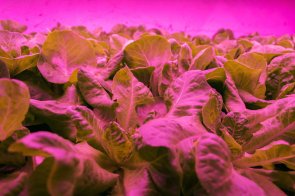
Lighting in Aquaponics
When it comes to lighting in aquaponics, there are a myriad of options available. With the AquaGrove aquaponics system, Grow Lights come with each and every unit, for both indoor and outdoor environments. The lighting system is not only useful for growing indoors and in low-light environments, but it is also valuable for increasing growth and productivity. Plants grow most significantly when they can photosynthesize, meaning they need light to eat, drink and grow. Plants that don’t have enough light will often be weak and thin or short and stunted; in other words, plants that don’t receive adequate light will not reach optimal growth.
The need for grow lighting really depends on the conditions of the surrounding environment:
Climate – You may live in a part of the world that doesn’t have many hours of sunlight. In this situation, grow lights can be very helpful in providing the light needed to grow a variety of plants.
Space – Many cities and urban environments do not have green spaces where gardeners can grow plants outdoors. Moving the garden indoors, even to a basement or room without sun exposure, is made possible with grow lights; an indoor gardener can control the light and temperature of the system to find the perfect balance during any season or conditions.
If either of the above listed conditions (low sunlight, limited outdoor space) apply to you, then you’ll likely be required to set up your aquaponics system indoors. If that’s the case, the use of grow lights is essential for success.
When it comes to choosing grow lights, not all lights are created equal or the best choice for all plants. For this reason, it is important to choose the right light fixture and bulbs for the plants that you want to grow. Vegetative plants like the blue spectrum of light and flowering/fruiting crops like the red spectrum. There is also the option to use full spectrum light bulbs which offer a broad range of light color.
Once you decide on the right lighting system or use a system like AquaGrove that has one built-in, remember to provide your vegetables with plenty of light. Like all plants, vegetables need the sun for photosynthesis. The fastest-growing vegetables need full sun which is equivalent to at least 6 to 8 hours of direct sunlight per day. You may consider using an automatic timer so that you can easily and accurately manage your light schedule, even when you are away from your system.
To learn more about aquaponics and how to begin your own sustainable and organic garden, contact AquaGrove.
